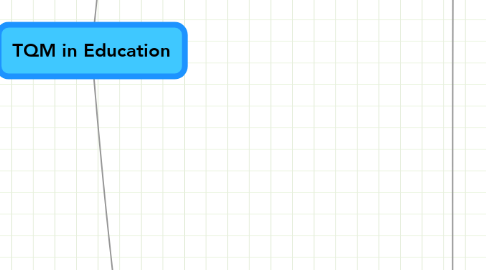
1. 14 - STRATEGY
1.1. Strategic Quality Management
1.1.1. Establish
1.1.1.1. Vision
1.1.1.2. Mission
1.1.1.3. Values
1.1.1.4. Goals
1.1.2. Market Research
1.1.3. SWOT Analysis
1.1.3.1. Internal Analysis
1.1.3.1.1. Strength
1.1.3.1.2. Weakness
1.1.3.2. Environmental Analysis
1.1.3.2.1. Opportunities
1.1.3.2.2. Threats
1.1.4. Critical Success Factords
1.1.4.1. Internal Indicators
1.1.4.2. External Measures
1.2. Strategic Plan
1.2.1. Market & Portfolio Analysis
1.2.1.1. Market Identification
1.2.1.2. Market Penetration
1.2.1.3. Portfolio of Services
1.2.1.4. Portfolio Development
1.2.2. Institutional Development Plan
1.2.2.1. Long Term
1.2.2.1.1. Cost-Leadership Strategy
1.2.2.1.2. Differentiation Strategy
1.2.2.1.3. Focus Strategy
1.2.2.2. Medium Term
1.2.2.2.1. Corporate Plan
1.2.2.3. Short Term
1.2.2.3.1. Business Plan
1.2.3. Quality Policy
1.2.3.1. Quality Plan
1.2.4. Quality Cost
1.2.4.1. Cost of Prevention
1.2.4.2. Cost of Failure
1.2.5. Monitoring & Evaluation
1.2.5.1. Immediate
1.2.5.2. Short-Term
1.2.5.3. Long-Term
2. 15 - FRAMEWORK
2.1. Quality Frameworks
2.1.1. Steps
2.1.1.1. Discovering Action
2.1.1.2. Questioning Methods and Procedures
2.1.1.3. Documenting Future Action
2.1.1.4. Implementing
2.1.1.5. Providing Evidence of Action Done
2.2. Components of Quality Frameworks
2.2.1. Developing leadership & strategy
2.2.1.1. process
2.2.1.1.1. Mission
2.2.1.1.2. Strategy
2.2.1.1.3. Customers Involvement
2.2.1.1.4. Assessment and Evaluation
2.2.2. Delighting customers
2.2.2.1. External
2.2.2.2. Internal
2.2.3. Quality Facilitators
2.2.3.1. role
2.2.3.1.1. Publicize Programme
2.2.3.1.2. Lead Quality Steering Group
2.2.4. Monitoring From Senior Management
2.2.5. Staff training
2.2.5.1. Awareness of Quality
2.2.5.2. Knowledge of Quality
2.2.5.3. Developing Quality Culture
2.2.5.4. Training the Basic
2.2.5.4.1. Team Work
2.2.5.4.2. Evaluation Methods
2.2.5.4.3. Problem-Solving Techniques
2.2.5.4.4. Decision-Making Techniques
2.2.5.5. Underscore the Organisation's Value
2.2.5.6. Top Management Involved in Training Design
2.2.6. Monitoring the delivery of the curriculum
2.2.6.1. Types of Information:
2.2.6.1.1. Syllabuses
2.2.6.1.2. Course Submissions
2.2.6.1.3. Schemes of Work
2.2.6.1.4. Records of Work
2.2.6.1.5. Assessment Records
2.2.6.1.6. Action Plans
2.2.6.1.7. Records of Achievement
2.2.6.2. Recording of Failure
2.2.6.3. Recording of Below-Average Performance
2.2.6.4. Documentation of:
2.2.6.4.1. Aims
2.2.6.4.2. Objectives
2.2.7. Verifying the assessment of student performance
2.2.8. Communicatin the quality message
2.2.9. Measuring the cost of quality
2.2.10. Teamwork
2.2.10.1. Recognition of Internal Customer Chain
2.2.10.2. Engine of Quality Improvement
2.2.11. Tools & techniques
2.2.11.1. Getting Things Done
2.2.11.2. Achieving Intial Successes
2.2.12. Developing a self-assessment culture
2.2.12.1. Peer Review System
2.2.12.2. Feedback Loops
2.2.12.3. Regular Review
2.2.12.4. Regular Evaluation
2.3. Applying Framework
2.3.1. Framework Meets the Promises to Customers
2.3.2. Necessary for Future Corporate Health & Survival
2.3.3. Slow Process, but has a Long Term Benefits
2.3.4. Often Lack of:
2.3.4.1. Time
2.3.4.2. Mental Resource on Planning
2.3.4.2.1. Long Term Strategy
2.3.4.2.2. Standards
2.3.5. Motivation, Expertise, Enthusiasm
2.3.6. Everybody is Responsible
2.3.7. Costumized from Existing Culture
